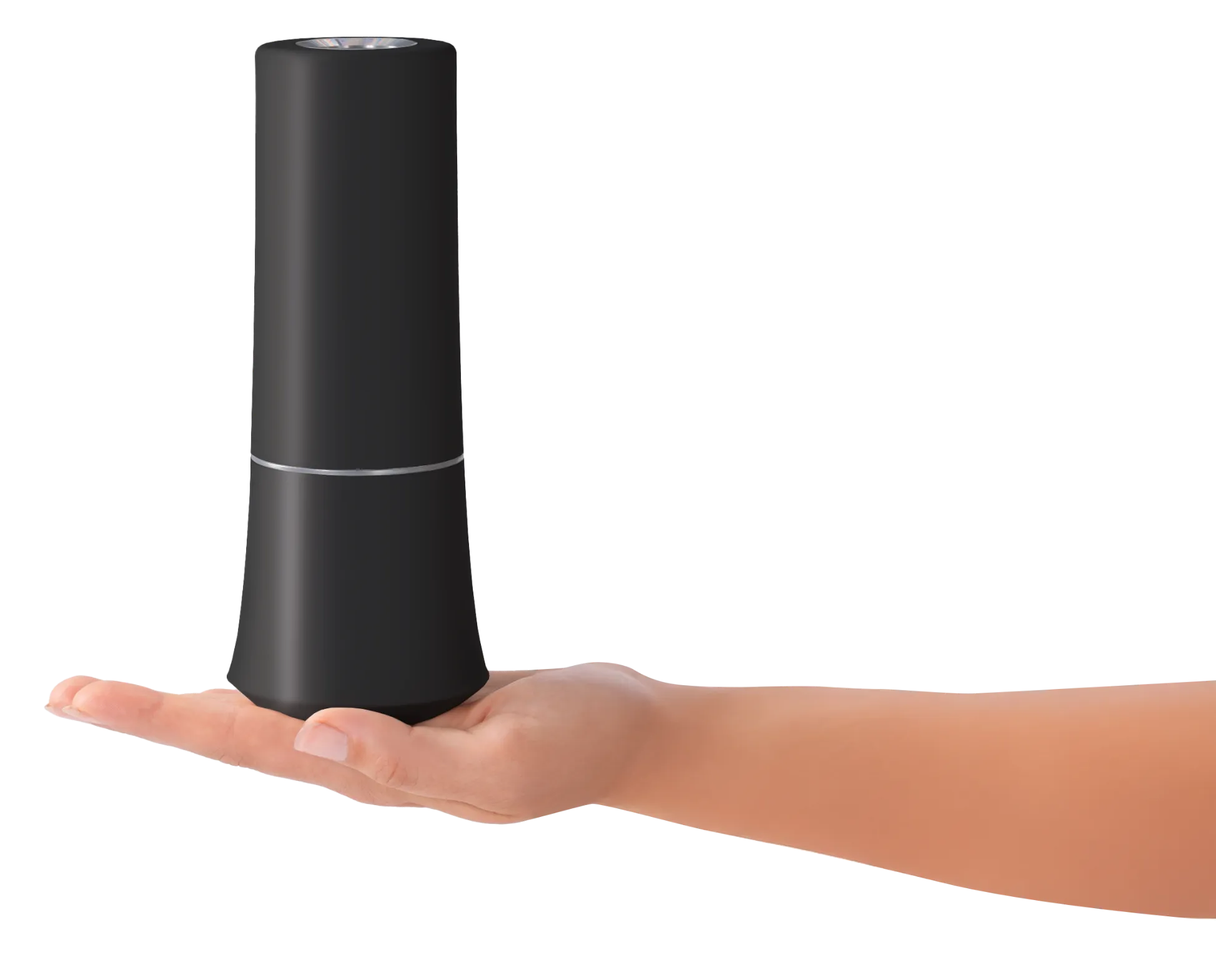Dont be a Dipstick!
Why Urinalysis no longer needs a Dipstick
The limitations of urinalysis lie not in how results are interpreted, but in the dipstick itself. Whether read manually or digitally, traditional dipsticks are prone to saturation variability, user-dependent technique, and reagent degradation once opened. These factors can affect accuracy, reliability, and confidence in clinical use. UTS™ removes the dipstick entirely, using a sealed cap with integrated, stable reagents to deliver a cleaner, safer, and more dependable solution for Point-of-Care urinalysis.
Subjective interpretation is widely acknowledged as a limitation of manual dipstick testing. Variability in lighting, timing, and operator technique can affect consistency.
Time-dependent accuracy requires precise adherence to reagent timing, which may not always be achievable in busy clinical settings.
Documentation is often handwritten, which can increase the risk of transcription error and reduce traceability.
Paper-based records can be difficult to audit, making it harder to support quality assurance processes or comply with governance frameworks.
In practice, several practical and operational factors may influence their use:
- Device size, portability, and cost can limit deployment across multiple settings, particularly in resource-constrained or community-based environments.
- In some services, analysers are shared between departments, which may affect availability and workflow efficiency.
- Maintenance requirements, error messages, and system downtime are raised as operational concerns, alongside the need for consistent training and user support.
- Some teams report instances of fallback to manual interpretation, especially where dipsticks remain accessible, which may reduce the intended benefits of standardisation.
- Where testing environments are not fully controlled, there is potential for contamination or the need for repeat testing, particularly if techniques or hygiene protocols are not consistently applied.
Although digital readers automate the interpretation process, they remain dependent on the dipstick technology and are therefore still influenced by many of the same procedural variables as manual testing. These include the handling of wet urine samples, the adequacy of reagent saturation, operator technique, and the condition of the reagents themselves, which may degrade if not stored or handled correctly.
Understanding the Difference: Where UTS™ Adds Value
Traditional urinalysis methods, whether manual or digital, introduce persistent and overlapping challenges that can affect accuracy, efficiency, and compliance. While not always immediately visible, these issues create friction across clinical practice, operations, and governance domains.
The table below outlines common issues observed with existing approaches and demonstrates how UTS™ has been designed to address them directly, not by incrementally improving dipstick testing, but by replacing it entirely.
| Reported Challenge | How UTS™ Responds |
|---|---|
| Subjective interpretation due to lighting, timing, and technique | UTS™ eliminates subjectivity through digital imaging and result interpretation, delivering consistent outputs regardless of environment or operator. |
| Time-sensitive reagent accuracy can be compromised in busy clinical settings | UTS™ standardises and automates timing during analysis, reducing dependency on manual countdowns or judgement calls. |
| Handwritten documentation introduces transcription errors and reduces traceability | UTS™ results are automatically captured and digitally recorded, supporting error reduction and EPR integration. |
| Poor auditability of paper-based records | UTS™ enables secure digital storage of test data, streamlining audit readiness and supporting compliance efforts. |
| Observed Limitation | How UTS™ Responds |
|---|---|
| Still reliant on dipping technique, timing, and sample handling | UTS™ uses a sealed cap system, the user only needs to apply the urine sample to the cap. There is no dipping or timing step required. |
| Device size, cost, and portability limiting use at scale | UTS™ is compact and low maintenance, designed for easy deployment across diverse settings including community and outreach environments. |
| Shared use across departments can disrupt workflows | UTS™ requires minimal maintenance and is designed with intuitive, user-friendly workflows to support everyday reliability. |
| Fallback to manual interpretation reduces standardisation | UTS™ does not rely on conventional dipsticks, removing the option for manual reading entirely and preserving consistency. |
| Contamination and repeat tests in uncontrolled environments | UTS™ uses a closed, single-use cap, reducing contamination risk and supporting better infection control. |
| Still dependent on dipstick format and reagent handling | UTS™ replaces dipsticks altogether, using integrated chemistry and imaging technology within a sealed device, avoiding the need for reagent strips and their associated handling requirements. |
| Governance Challenge | How UTS™ Responds |
|---|---|
| ISO 15189 and POCT compliance can be difficult with manual methods | UTS™ enables full digital traceability, structured workflows, and audit-ready data capture, all supportive of quality assurance frameworks. |
| Training inconsistency across users for manual or complex digital systems | UTS™ is designed for ease of use, with minimal training required. The closed-system workflow reduces steps and minimises variation, making staff onboarding and competency maintenance more manageable. |
Open sample handling poses infection risks | UTS™ uses a closed cap system, limiting exposure to urine and reducing contact with surfaces or digital testing elements, improving safety for both users and patients. |
Summary: How UTS™ Solves the Dipstick Problem
UTS™ is a fully digital, sealed, and semi-automated urinalysis solution that delivers:
Precision You Can Trust
Accurate 90-sec results – fewer errors, repeat tests and unnecessary lab referrals, supporting confident decisions.
Real-time Connectivity
Instant results shared across care teams – empowering better communication and faster follow-up.
Effortless Adoption
Minimal training, easy to use, very little maintenance – ideal for busy clinical settings.
Versatile by Design
Fast results – saves time, speeds decisions, improves patient flow.
Streamlined Workflows
One system for multiple settings – standardised testing across services.
Portable & Scalable
Compact, easy to move – suitable for all care settings, from hospital wards to community and mobile care.
Redefining What’s Possible in Point-of-Care Urinalysis
UTS™ doesn’t just improve on traditional dipstick testing, it moves beyond it. By removing the variables that compromise reliability and embedding quality, safety, and usability into its core design, UTS™ offers a smarter, more scalable solution for modern healthcare environments. Whether in hospitals, clinics, or community settings, UTS™ delivers the consistency and confidence that point-of-care testing demands.
More research & case studies

Introduction to Urinalysis
Urinalysis is a vital, non-invasive diagnostic tool that supports early detection, disease monitoring, and preventive care across all levels of healthcare, making it essential in modern medical practice.

The History of Urinalysis. From ancient practices to modern diagnostics
Urinalysis, the examination of urine to gain insights into health, is one of the oldest diagnostic practices in medicine. This simple yet powerful test has evolved over thousands of years, from the ancient world’s early observations to today’s sophisticated laboratory techniques. This section explores the fascinating journey of urinalysis and discovers how it has shaped healthcare as we know it.

Urinalysis. The unsung hero of diagnostics
Urinalysis is a powerful yet undervalued diagnostic tool that offers rapid, non-invasive insights into a wide range of health conditions, demanding renewed focus on accuracy, standardisation, and modernisation to fulfil its full potential in preventive and equitable healthcare.
